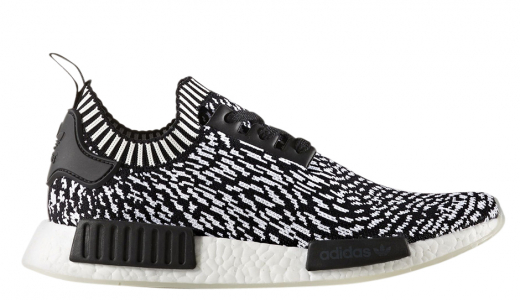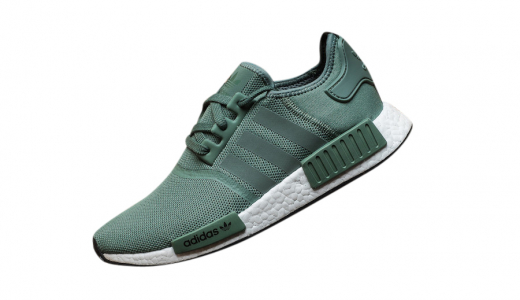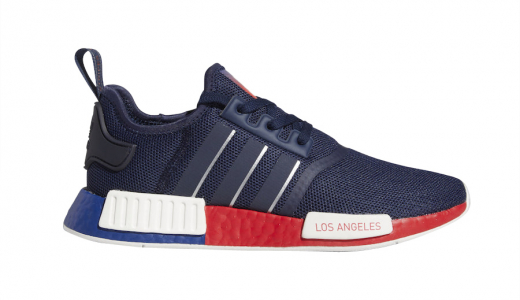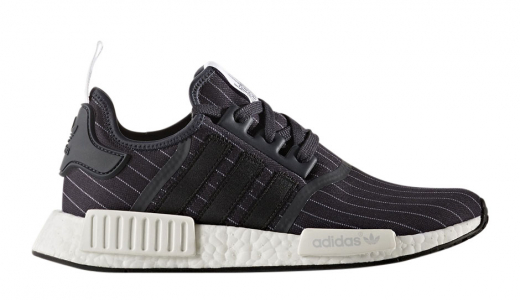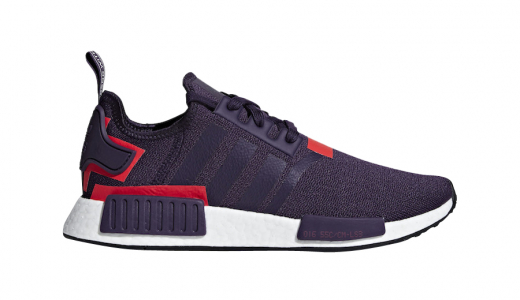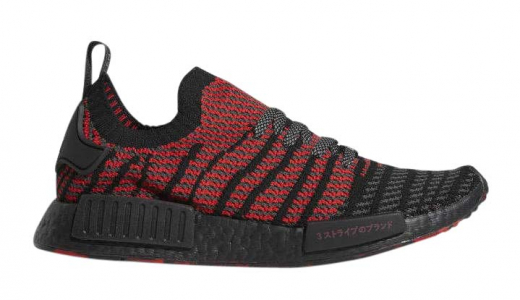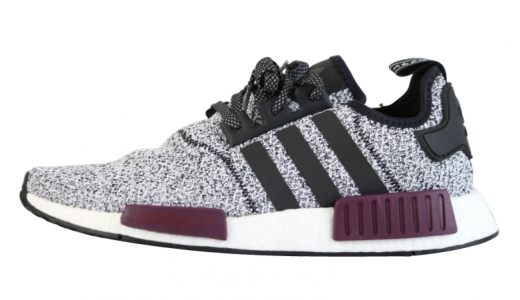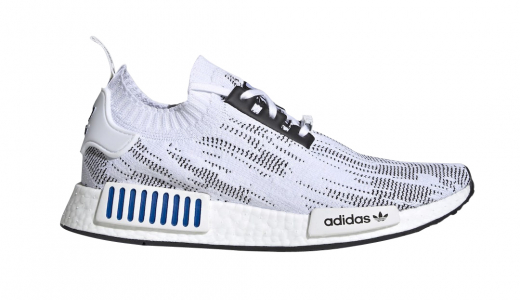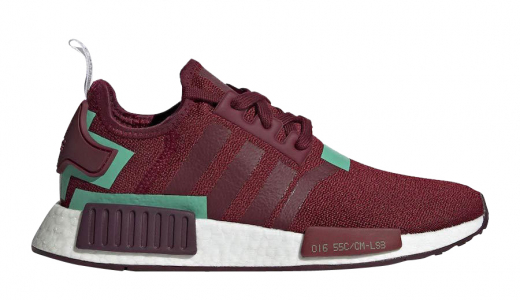Adidas Nmd R1
The Adidas NMD R1 is a revolutionary sneaker that seamlessly blends modern technology with a sleek, urban aesthetic. Launched in December 2015, the NMD R1 quickly gained a cult following for its comfort, design, and versatility. The shoe's standout features include a breathable Primeknit upper, which offers a snug, sock-like fit, and Adidas' signature Boost midsole technology, providing exceptional cushioning and energy return with every step.
The design of the NMD R1 is inspired by Adidas' archival running models, incorporating elements from the Micro Pacer, Rising Star, and Boston Super. Its distinctive look is characterized by the EVA plugs inserted into the Boost midsole, which add both structural integrity and a unique visual element. The rubber outsole ensures durable traction, making it suitable for both urban exploration and casual wear. With its blend of cutting-edge technology and street-ready style, the Adidas NMD R1 has cemented its place as a staple in contemporary sneaker culture, appealing to athletes, fashion enthusiasts, and everyday wearers alike.
History of Adidas Nmd R1
The History of the Adidas NMD R1: Marrying Legacy and Innovation
Introduction
The Adidas NMD R1, which stands for Nomad, is more than just a sneaker; it is a cultural phenomenon that blends heritage, innovation, and contemporary style. Since its debut in December 2015, the shoe has remained a staple in Adidas' lineup, captivating sneaker enthusiasts, fashion aficionados, and performance-oriented consumers alike. To understand its significance, one must delve into the history and evolution of this iconic sneaker.The Genesis: A Perfect Storm of Creativity
Adidas tasked its designers with creating a sneaker that not only looked forward but also respected the brand's venerable history. This challenge fell to Nic Galway, Vice President of Global Design at Adidas Originals. Galway, who had previously worked on other groundbreaking models like the Adidas Yeezy, saw an opportunity to channel Adidas' storied past while innovating for the future.Galway’s vision was to encapsulate the ethos of urban exploration—hence, the name "Nomad." He wanted a sneaker that could effortlessly perform in various settings, from the bustling streets of New York City to the quiet parks of Berlin.
Drawing on Heritage: The Inspirations Behind the Design
The NMD R1 design pays homage to several Adidas classics, including the Micro Pacer, Boston Super, and Rising Star:1. **Micro Pacer**: Launched in 1984, it was the first sneaker to integrate a microcomputer in its design, emphasizing Adidas' forward-thinking ethos. 2. **Boston Super**: A running shoe from 1986, known for its comfort and performance. 3. **Rising Star**: Another 1980s star, incorporating removable midsole plugs, which would become a critical design element in the NMD R1.
These archival elements were fused with modern technologies, notably the Boost midsole and Primeknit upper. This combination created a product that was both nostalgic and innovative.
Technical Marvel: The Build of the NMD R1
Incorporating Boost technology, Adidas’ proprietary cushioning system, provided unparalleled comfort and energy return. Boost technology utilizes thermoplastic polyurethane (TPU) that compresses under impact and instantly bounces back to its original shape. This dynamic responsiveness became a highlight of the NMD R1, offering wearers a unique experience.The upper of the shoe employed Adidas’ Primeknit technology, a seamless, flexible, and breathable textile that adapts to the shape of the wearer’s foot, ensuring a snug yet comfortable fit. This made the NMD R1 not only stylish but also practical for prolonged wear.
A Cultural Milestone: Debut and Reception
The NMD R1 debuted on December 12, 2015, and was met with immediate acclaim. The initial launch was marked by limited availability, which only heightened its allure. Social media buzzed with discussions, reviews, and unboxing videos, propelling the NMD R1 into the limelight.Critics praised its aesthetic versatility, noting how it could pair seamlessly with both athletic wear and casual outfits. The comfort and performance aspects were equally lauded, making it a hit across multiple demographics.
Subsequent Iterations and Collaborations
Following the success of the initial release, Adidas continued to innovate and experiment with the NMD R1. Countless colorways and material variations were introduced, each attracting its own set of admirers.Collaborations played a key role in maintaining public interest:
1. **BAPE x Adidas NMD R1**: A collaboration with the streetwear giant A Bathing Ape resulted in camo-styled NMDs, which sold out almost instantly. 2. **Neighborhood x Adidas NMD R1**: This collaboration focused on understated elegance and premium materials, appealing to a more mature audience. 3. **Pharrell Williams x Adidas NMD Human Race**: Perhaps the most notable, this line incorporated cultural and humanitarian themes, broadening the shoe’s appeal.
These partnerships didn’t just generate buzz; they contributed to the narrative of NMD R1 as a fluid, adaptable canvas that could transform through artistic collaboration.
The Impact on Streetwear and Fashion
The NMD R1 emerged during a time when the lines between streetwear, athleisure, and high fashion were increasingly blurred. Its versatile design meant that it could be found on the feet of both athletes and runway models. This adaptability helped solidify the NMD R1 as an icon in modern streetwear culture.Brands like Supreme and Off-White were also gaining immense popularity around this time, and the NMD R1's aesthetic naturally aligned with the burgeoning trends. Its sleek silhouette, comfortable build, and various colorways made it an instant hit in social media spheres, from Instagram influencers to YouTube sneaker reviews, further driving its cultural penetration.
Market Performance and Economic Impact
The phenomenal success of the NMD R1 had significant economic implications for Adidas. Within the first quarter following its release, Adidas reported a considerable uptick in revenue, attributing part of this surge to the popularity of the NMD line. The shoe became one of the brand’s top sellers and was crucial in revitalizing Adidas Originals' market performance against major competitors like Nike.Limitations and Criticisms
While the NMD R1 received widespread acclaim, it was not without its criticisms. Some consumers felt that the shoe’s hype led to excessive commercialization, diluting its exclusivity. Limited initial releases followed by wider availability raised concerns about market saturation. Additionally, while the shoe excelled in urban settings, it wasn’t particularly suited for serious athletic endeavors, which led to some disappointment among performance-focused buyers.Legacy and Future Prospects
Nearly a decade after its debut, the NMD R1 continues to be a significant player in Adidas' portfolio. Its multiple iterations keep it fresh and relevant, and its influence extends beyond the confines of streetwear into broader cultural discussions.Looking forward, the NMD R1’s legacy serves as a template for future designs that seek to blend history with innovation. Its impact on the sneaker culture has set a high bar for what it means to create a shoe that is both a performance powerhouse and a fashion statement.


